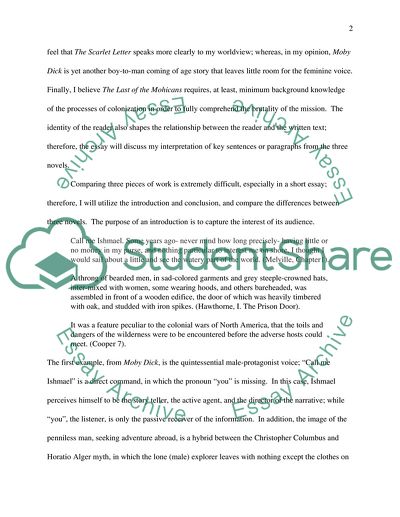Cite this document
(Significant Place in Western Literary Tradition: Moby Dick, The Essay, n.d.)
Significant Place in Western Literary Tradition: Moby Dick, The Essay. Retrieved from https://studentshare.org/literature/1746941-moby-dick-herman-melville-the-scarlet-letter-nhawthworne-cooper-the-last-of-the-mohycans
Significant Place in Western Literary Tradition: Moby Dick, The Essay. Retrieved from https://studentshare.org/literature/1746941-moby-dick-herman-melville-the-scarlet-letter-nhawthworne-cooper-the-last-of-the-mohycans
(Significant Place in Western Literary Tradition: Moby Dick, The Essay)
Significant Place in Western Literary Tradition: Moby Dick, The Essay. https://studentshare.org/literature/1746941-moby-dick-herman-melville-the-scarlet-letter-nhawthworne-cooper-the-last-of-the-mohycans.
Significant Place in Western Literary Tradition: Moby Dick, The Essay. https://studentshare.org/literature/1746941-moby-dick-herman-melville-the-scarlet-letter-nhawthworne-cooper-the-last-of-the-mohycans.
“Significant Place in Western Literary Tradition: Moby Dick, The Essay”, n.d. https://studentshare.org/literature/1746941-moby-dick-herman-melville-the-scarlet-letter-nhawthworne-cooper-the-last-of-the-mohycans.


